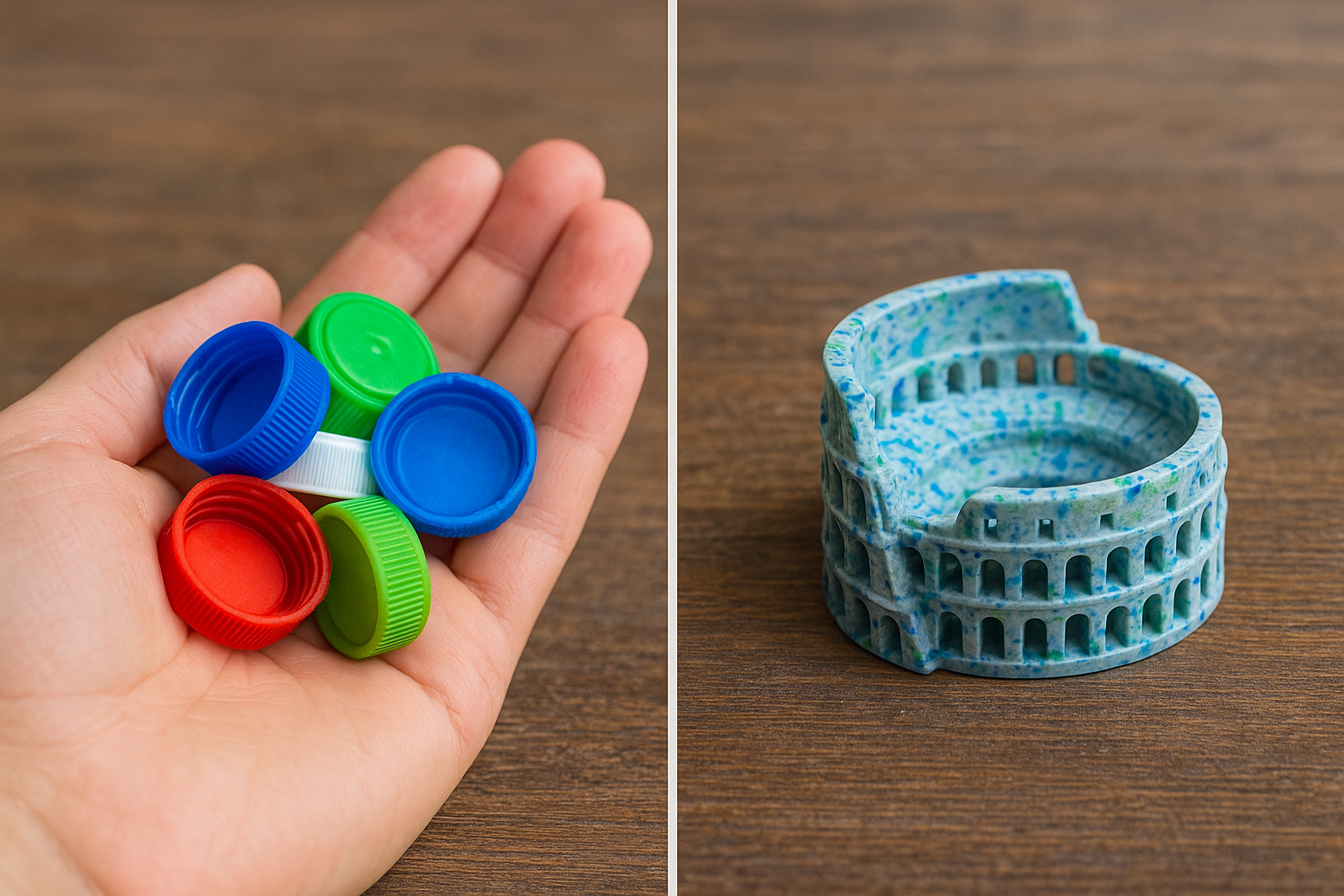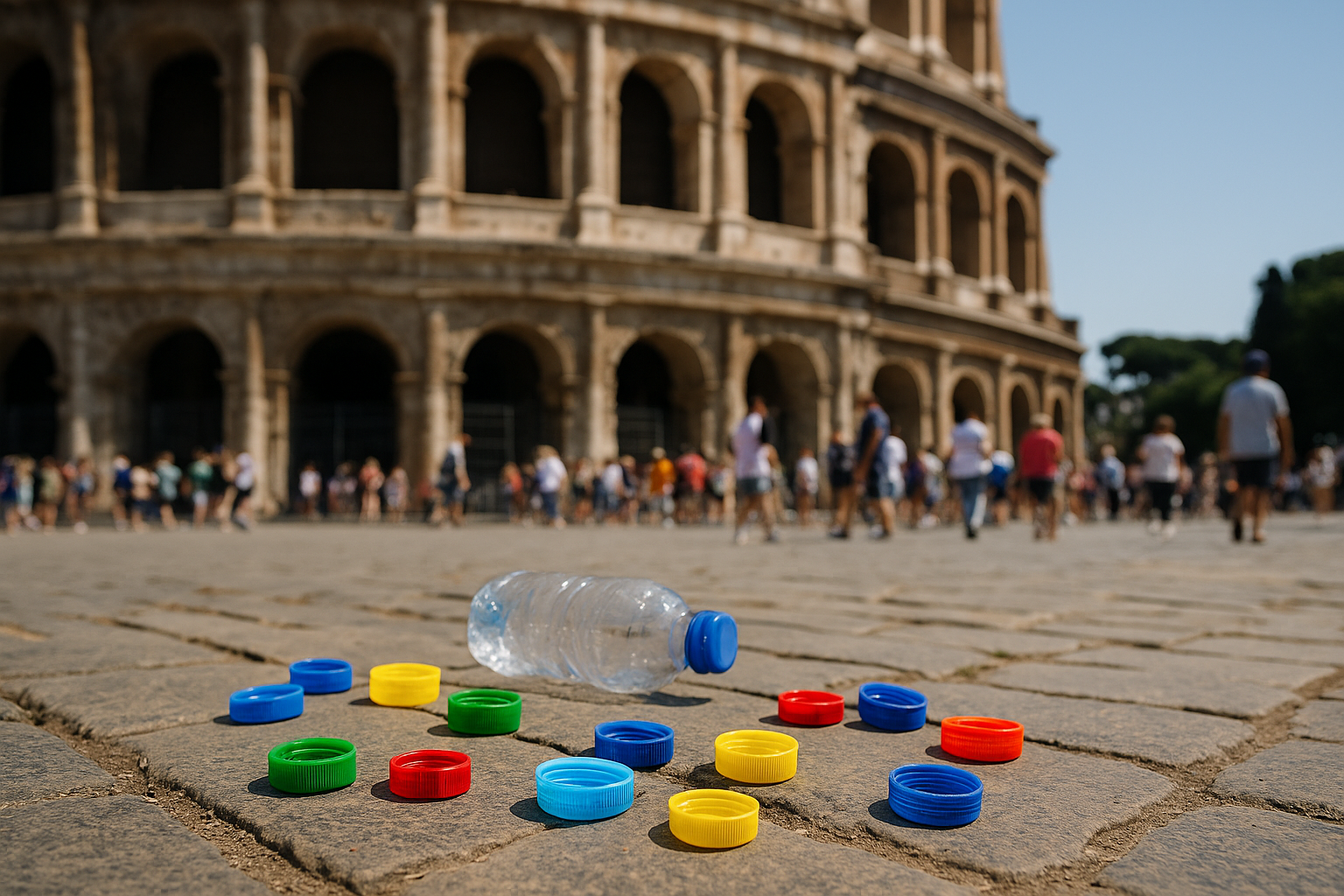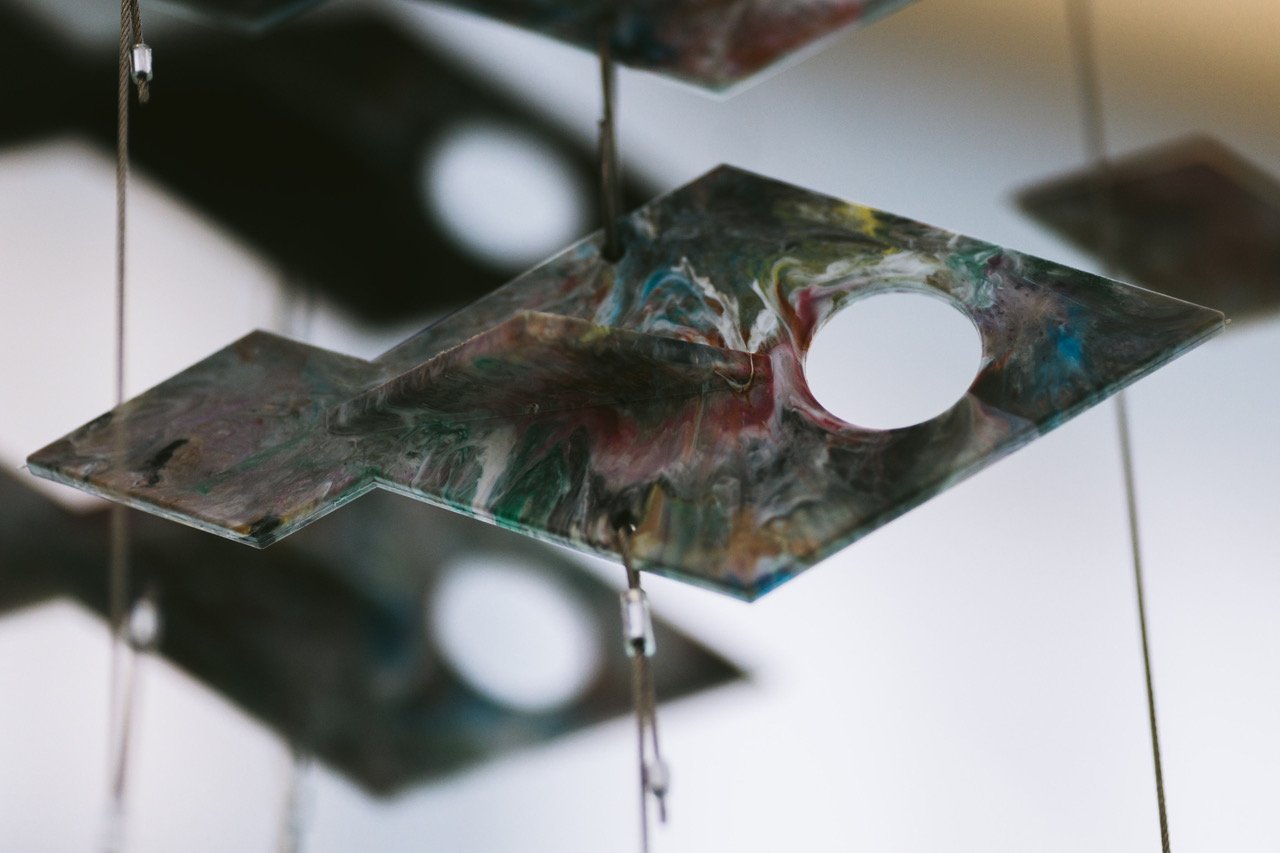Concepts & Ideas: Coliseum Collector
A project concept generated by our team using AI-generated imagery.
The Concept
What if we turned everyday waste, like discarded water bottle lids, into premium, locally made souvenirs?
“Coliseum Collector” is a microfactory concept that transforms HDPE plastic lids into miniature replicas of the Coliseum and Roman artefacts using compact recycling tools. Designed for high-footfall tourist zones, the setup creates a new kind of keepsake: hyper-local, made-on-the-spot, and circular.
Why It Matters?
Outside the Coliseum in Rome, the streets are littered with plastic bottle caps—especially during hot summer days. Inside the gift shop, small 3D-printed busts and replicas sell for €6 or more, despite being made from virgin plastic and produced off-site.
There’s a missed opportunity here: to capture waste at the point of generation and turn it into meaningful, place-based products. It’s more than recycling—it’s storytelling.
How It Could Work?
Tourists get a souvenir with a story, and a sense of participation in the circular economy. For a startup or nonprofit, it’s a way to generate income, raise awareness, and showcase sustainable micro-manufacturing.
1. Collection
Plastic caps (HDPE) are gathered daily from around the monument area, either via public bins, collection incentives, or direct collaboration with vendors.
2. Processing Station
A small stationary or mobile workshop equipped with Sustainable Design Studio’s shredder and injection machine transforms the collected waste into miniature Coliseums, Caesar busts, or other iconic shapes. Custom molds reflect the site’s history.
3. Sales & Impact
These souvenirs can be sold on-site or through a curated local gift shop stand. Each piece comes with a simple card or stamp: “Made from recycled plastic gathered at the Coliseum, Rome.”
Required Sustainable Design Studio Items
-
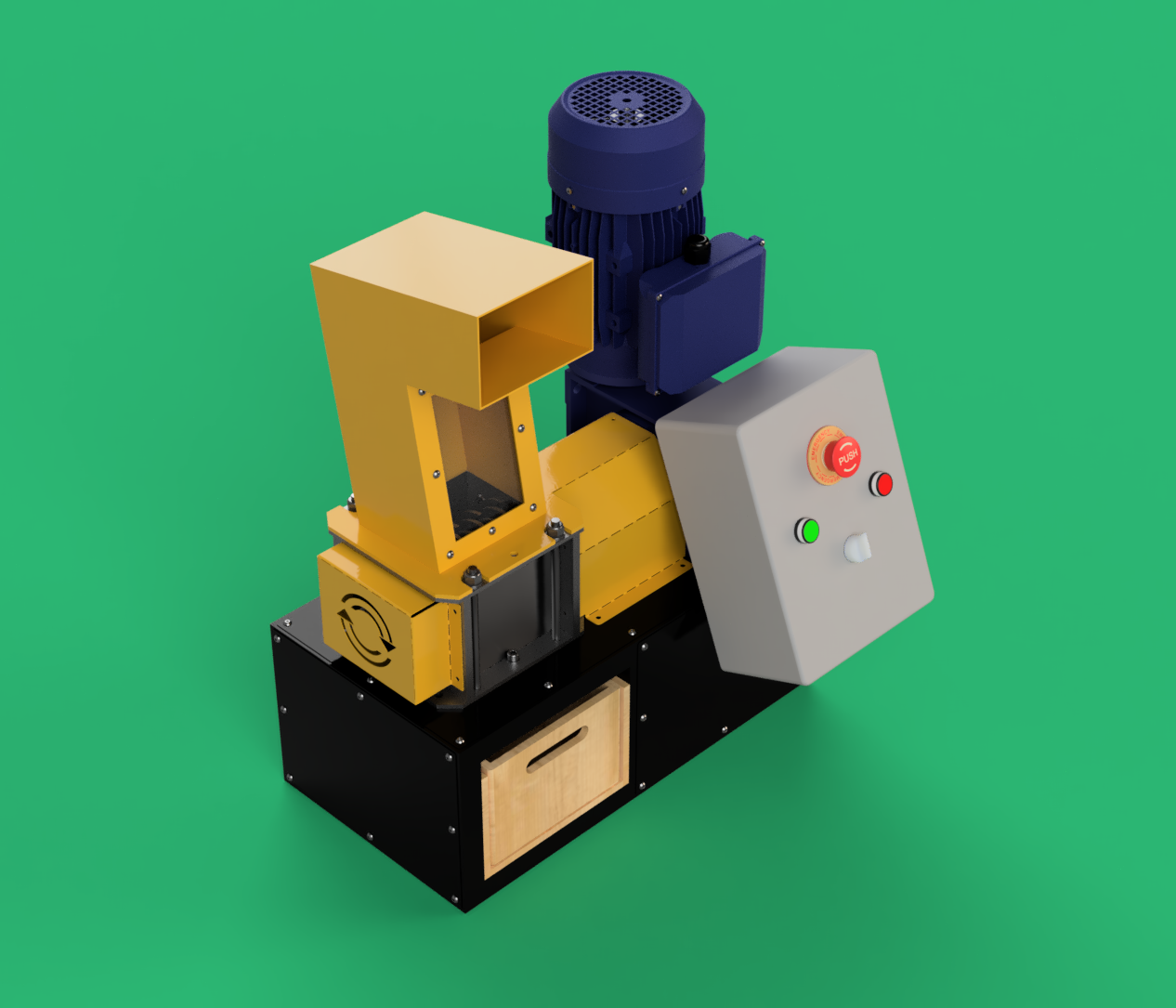
Shredder Basic
-

Injection Mini
-
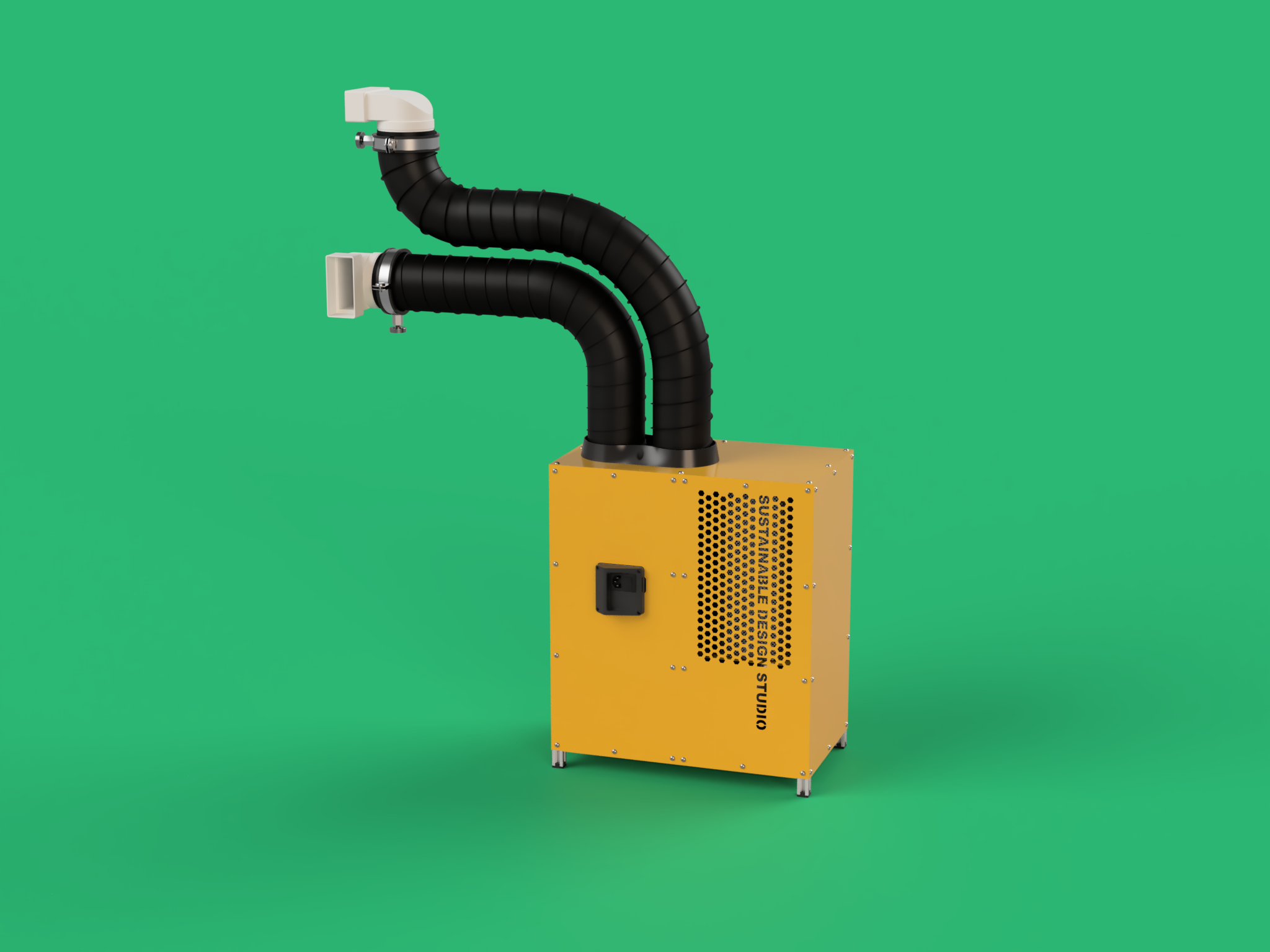
Fume Extractor
-

Custom Moulds
-

Consultancy & Support
Estimated Budget: £5000/€5900/$6650
We believe that with the above budget, it would require you to sell 1500-2000 units to break even.
Wider Applications
This concept could be replicated at historical landmarks, cultural destinations, or high-footfall tourist zones across the world. Imagine miniature Eiffel Towers made from Parisian street waste, or Statue of Liberty badges crafted from plastics collected around New York’s harbors. At the Great Wall, visitors might take home a recycled keepsake made from caps and wrappers gathered from the trail.
History museums, architectural landmarks, and even UNESCO sites could host small-scale microfactories that turn visitor waste into meaningful products—souvenirs with a direct link to place and story. These setups could be used to raise awareness, educate about material flows, and even generate funding for conservation efforts.
Whether permanent installations, pop-ups during tourism seasons, or mobile activations tied to heritage campaigns, the “Coliseum Collector” model scales to suit the setting—while reinforcing circular thinking in a tangible, memorable way.
Why It’s A Great Start Up Idea?
Minimal material cost: Waste is collected freely or cheaply.
High-margin, high-volume: Tourists are already buying similar items.
Portable and scalable: The same setup could appear outside other landmarks worldwide (Eiffel Tower, Machu Picchu, Great Wall, etc.).
Taps into sustainability, circular design, and local pride.
Interested in Starting Something Like This?
This concept is ready to be brought to life. Enquire now to explore how you could pilot or adapt this idea for your own location or community.
Related Resources.
Case Studies

